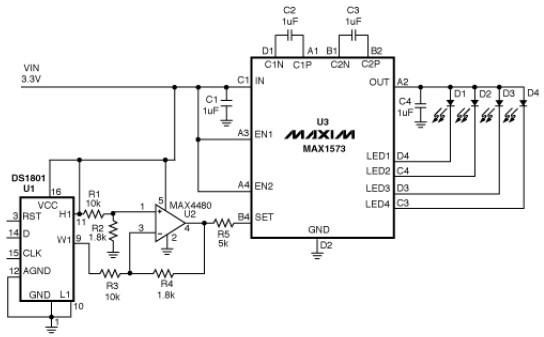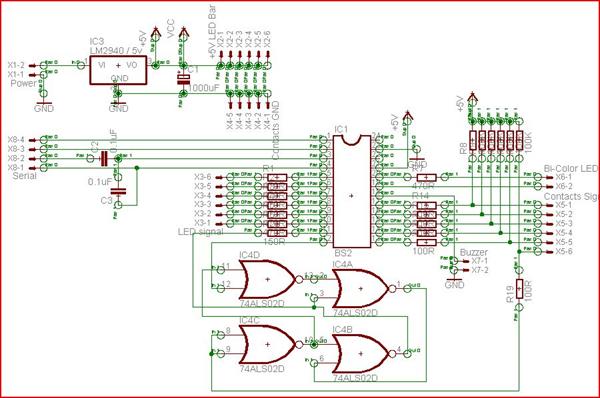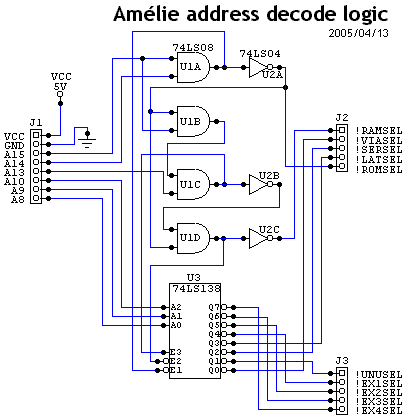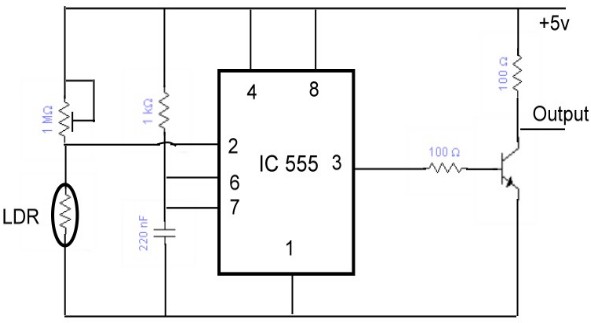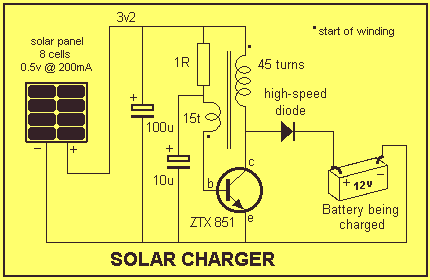
Solar Mailbox project

The objective of this project is to create a self-sustaining mailbox that operates solely on solar power and displays the house number based on the battery level. The system is designed to function autonomously, regardless of light conditions for charging the battery. The solar cell charges three AA NiMH cells through a Sziklai pair consisting of T5 (2N2907) and T4 (1N1711). This configuration is essential to maintain a very low reverse current when sunlight is absent and the battery is fully charged. Charge control can be managed via D5, which receives a "1" level signal from the PIC, activating T6 to regulate the current to T5's base. For battery protection, the Zener diode DZ6 is set to 4.6V to prevent overcharging, which could significantly reduce the battery's lifespan. This function has not yet been implemented in the PIC program and is reserved for future use. The three digits of the display are driven by three separate 2N1711 transistors, with each digit comprising approximately 20 white LEDs. The control signal is derived from an OR operation between a PWM signal, maintaining a constant background light level, and a blinking sequence generated by the PIC. The Sun_Sense circuit consists of a low-pass filter made up of R8 and C6, noting that leakage current from the PIC may affect the level, which necessitates that R8 be no less than 39 kOhms. The Vbat_sense circuit includes two diodes in series, producing a constant 1.3V that the PIC can measure to assess the battery level. This function is also not yet managed by the PIC program and is reserved for future implementation. The PIC16F628 microcontroller operates with a 32.768 kHz crystal oscillator, chosen for its low power consumption, allowing the PIC to function at voltages as low as 3V.
The schematic for this solar-powered mailbox includes several key components and configurations. The solar cell acts as the primary power source, charging the three AA NiMH batteries through the Sziklai pair, which effectively minimizes reverse current flow when sunlight is not available. The T5 (2N2907) and T4 (1N1711) transistors are configured to form this pair, ensuring high efficiency in transferring power from the solar cell to the batteries.
The charge control mechanism is facilitated by the D5 connection, which interfaces with the PIC microcontroller. When the PIC outputs a high signal, T6 is activated, allowing current to flow into the base of T5, thereby controlling the charging process. The Zener diode DZ6, rated at 4.6V, is crucial for protecting the battery from overcharging, which could lead to reduced battery life.
The display consists of three digits, each controlled by a separate 2N1711 transistor. Each digit is composed of approximately 20 white LEDs, arranged to form the house number. The control signal for the display is generated by combining a PWM signal, which maintains a constant light level, with a blinking signal produced by the PIC to create the desired display effect.
For sensing purposes, the Sun_Sense circuit employs a low-pass filter made from resistor R8 and capacitor C6. This filter ensures stable voltage readings while mitigating the effects of leakage current from the PIC. The resistor R8 must have a value no lower than 39 kOhms to avoid excessive leakage.
The Vbat_sense circuit is designed to monitor the battery voltage using two diodes in series, producing a stable 1.3V reference voltage for the PIC. This allows the microcontroller to assess the battery level accurately. Although the battery management functions for both the Zener diode and Vbat_sense are not yet implemented in the PIC program, they are earmarked for future enhancements.
The PIC16F628 microcontroller is selected for its efficient operation at low voltages, powered by a 32.768 kHz crystal oscillator. This frequency is optimal for minimizing power consumption, enabling the microcontroller to operate effectively even at 3V, thus ensuring the mailbox system remains functional in varying lighting conditions.The purpose of this project is to develop a self sufficient Mailbox (real one) that will be powered only by the sun and that will display the number of the house, but only in accordance with the battery level. The system must work autonomously when there is or not enough light to charge the battery. : The Solar Cell is charging the 3 AA NiMH cell trough the Sziklai pair composed by the T5 (2N2907) and T4 (1N1711). This is necessary to ensure a very low reverse current when the sun is off and the battery at full charge. Control of the charge can be applied on D5 with a "1" level from the PIC, which will reverse the T6 that define the current in T5 base.
For Battery protection purpose, the value of Zener diode DZ6 must be 4. 6V to prevent the battery for over-charging which will degrade significantly its life time. This function is not yet managed by the PIC program and is reserved for further use. : The 3 digits are controlled by 3 separate 2N1711 (each digit is compose about 20 white LED). The control signal is the OR between a PWM signal, that ensure a constant background level of light plus a "blinking" part which is the sequence generated by the PIC. Sun_Sense: Just a low pas filter composed of R8 and C6. Beware that leakage current from the PIC can affect the level. This prevent R8 to be bellow 39KOhms. Vbat_sense: These 2 diodes in serial create a 1. 3V constant voltage that can be measured by the PIC to determine the level of the battery. This function is not yet managed by the PIC program and is reserved for further use. : The PIC16F628 operates with a 32. 768KHz crystal oscillator. This frequency have been selected, not to consume too much. In this condition, the PIC is able to operate down to 3V. 🔗 External reference
The schematic for this solar-powered mailbox includes several key components and configurations. The solar cell acts as the primary power source, charging the three AA NiMH batteries through the Sziklai pair, which effectively minimizes reverse current flow when sunlight is not available. The T5 (2N2907) and T4 (1N1711) transistors are configured to form this pair, ensuring high efficiency in transferring power from the solar cell to the batteries.
The charge control mechanism is facilitated by the D5 connection, which interfaces with the PIC microcontroller. When the PIC outputs a high signal, T6 is activated, allowing current to flow into the base of T5, thereby controlling the charging process. The Zener diode DZ6, rated at 4.6V, is crucial for protecting the battery from overcharging, which could lead to reduced battery life.
The display consists of three digits, each controlled by a separate 2N1711 transistor. Each digit is composed of approximately 20 white LEDs, arranged to form the house number. The control signal for the display is generated by combining a PWM signal, which maintains a constant light level, with a blinking signal produced by the PIC to create the desired display effect.
For sensing purposes, the Sun_Sense circuit employs a low-pass filter made from resistor R8 and capacitor C6. This filter ensures stable voltage readings while mitigating the effects of leakage current from the PIC. The resistor R8 must have a value no lower than 39 kOhms to avoid excessive leakage.
The Vbat_sense circuit is designed to monitor the battery voltage using two diodes in series, producing a stable 1.3V reference voltage for the PIC. This allows the microcontroller to assess the battery level accurately. Although the battery management functions for both the Zener diode and Vbat_sense are not yet implemented in the PIC program, they are earmarked for future enhancements.
The PIC16F628 microcontroller is selected for its efficient operation at low voltages, powered by a 32.768 kHz crystal oscillator. This frequency is optimal for minimizing power consumption, enabling the microcontroller to operate effectively even at 3V, thus ensuring the mailbox system remains functional in varying lighting conditions.The purpose of this project is to develop a self sufficient Mailbox (real one) that will be powered only by the sun and that will display the number of the house, but only in accordance with the battery level. The system must work autonomously when there is or not enough light to charge the battery. : The Solar Cell is charging the 3 AA NiMH cell trough the Sziklai pair composed by the T5 (2N2907) and T4 (1N1711). This is necessary to ensure a very low reverse current when the sun is off and the battery at full charge. Control of the charge can be applied on D5 with a "1" level from the PIC, which will reverse the T6 that define the current in T5 base.
For Battery protection purpose, the value of Zener diode DZ6 must be 4. 6V to prevent the battery for over-charging which will degrade significantly its life time. This function is not yet managed by the PIC program and is reserved for further use. : The 3 digits are controlled by 3 separate 2N1711 (each digit is compose about 20 white LED). The control signal is the OR between a PWM signal, that ensure a constant background level of light plus a "blinking" part which is the sequence generated by the PIC. Sun_Sense: Just a low pas filter composed of R8 and C6. Beware that leakage current from the PIC can affect the level. This prevent R8 to be bellow 39KOhms. Vbat_sense: These 2 diodes in serial create a 1. 3V constant voltage that can be measured by the PIC to determine the level of the battery. This function is not yet managed by the PIC program and is reserved for further use. : The PIC16F628 operates with a 32. 768KHz crystal oscillator. This frequency have been selected, not to consume too much. In this condition, the PIC is able to operate down to 3V. 🔗 External reference

